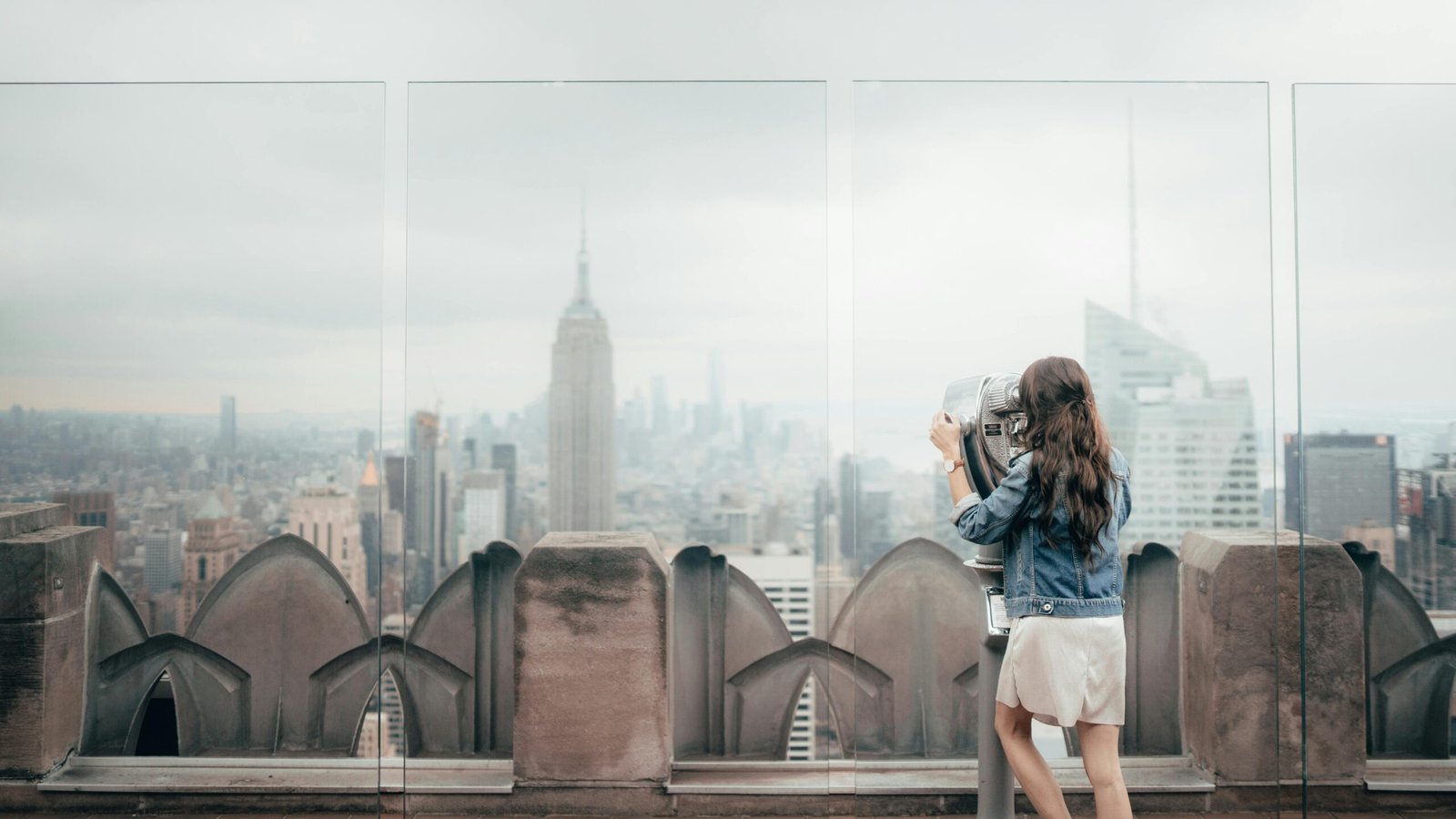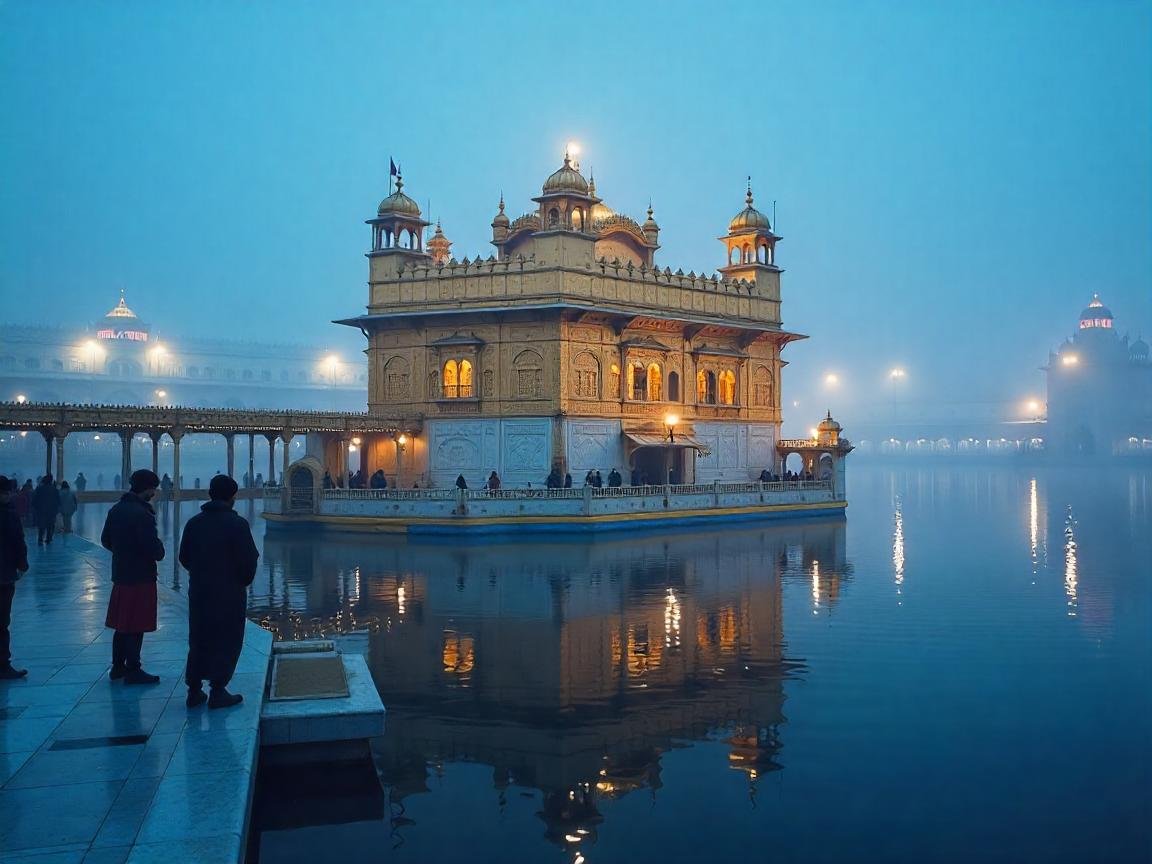Wellness Travel
10 destinations where vacation meets wellness goals

Summer vacation planning often feels like choosing between your health goals and your desire to unwind. The good news? You don’t have to sacrifice either. A comprehensive analysis of America’s most populous cities reveals destinations where you can maintain your wellness routine without breaking the bank.
The search for the ideal summer getaway focused on cities with comfortable July temperatures between 65°F and 85°F. From this pool, 35 cities emerged as contenders based on their beach access, hiking trails, hotel prices, grocery costs, and fitness studio availability. The results might surprise you.
Portland leads the healthy vacation revolution
- Portland, Oregon claims the top spot with an unbeatable combination of 244 scenic hiking trails and reasonable living costs. The city’s mild summer weather and outdoor culture make it perfect for active travelers who want to explore without overheating.
- San Jose, California earns second place thanks to some of the most affordable hotel rates among major cities at just over $130 per night. The Silicon Valley hub offers easy access to both beaches and mountains, giving visitors diverse outdoor options.
- Omaha, Nebraska surprises as the third-best destination, boasting budget-friendly grocery prices at $235.12 and reasonable accommodations. This Midwest gem proves you don’t need oceans or mountains for a healthy summer escape.
- Milwaukee, Wisconsin takes fourth place with the nation’s lowest grocery prices at $221.46, making it ideal for travelers who prefer preparing their own healthy meals. The city’s lakefront location provides plenty of outdoor recreation opportunities.
- Kansas City, Missouri rounds out the top five with its blend of affordability and surprising outdoor amenities. The city’s numerous parks and trails offer escape from urban life without the coastal price tags.
Sunshine state meets golden state
- Jacksonville, Florida stands out as the only East Coast city in the top 10, offering beach access and hotel rates averaging just $132.60 per night. The combination of ocean activities and affordable accommodations makes it a strong contender for budget-conscious beach lovers.
- San Diego, California justifies its higher costs with 578 fitness studios and 218 hiking trails. The city’s perfect 69.5°F July average temperature creates ideal conditions for any outdoor activity.
- Los Angeles, California surprises with its inclusion despite notorious traffic and costs. The city’s 68.7°F summer weather and extensive fitness infrastructure help offset higher prices.
- Colorado Springs, Colorado dominates the hiking category with 278 trails, more than any other city analyzed. For mountain enthusiasts seeking elevation and exercise, this destination delivers unmatched natural beauty.
- Albuquerque, New Mexico completes the list with its unique high-desert landscape and reasonable prices across all categories. The city offers a different kind of outdoor experience for adventurous travelers.
California’s wellness dominance
The Golden State’s strong showing isn’t coincidental. California cities excel in providing extensive fitness studio networks and diverse hiking opportunities. San Diego alone boasts nearly 600 fitness facilities, while Los Angeles offers year-round pleasant weather that encourages outdoor activity.
However, California’s dominance comes with trade-offs. Hotel and grocery prices typically run higher than Midwest alternatives, making cities like Omaha and Milwaukee attractive for longer stays where accommodation and food costs accumulate.
Weather patterns shape summer plans
Temperature preferences vary, but the data reveals clear patterns. Seattle tops the coolest cities list at 66.3°F, perfect for those who wilt in heat. Los Angeles and San Diego follow closely, offering beach access without scorching temperatures.
Heat seekers should consider Tampa at 84.2°F, Fresno at 83.4°F, or Tulsa at 83.3°F. These warmer destinations still fall within the comfortable range while providing full summer heat for sun worshippers.
Making healthy choices affordable
The most budget-friendly approach combines strategic destination selection with smart planning. Fresno offers the cheapest hotel rates at $117 per night, while Milwaukee’s grocery prices allow healthy eating without overspending. Jacksonville balances both categories well, making it ideal for extended stays.
Fitness enthusiasts should note that Chicago leads with 640 studios despite not making the top 10 overall. This illustrates how single factors rarely determine the best destination; rather, the ideal choice balances multiple priorities.
Your summer wellness strategy
Choosing the right destination sets the foundation, but maintaining healthy habits requires intentionality. Morning hikes in Portland, beach yoga in San Diego, or exploring Milwaukee’s lakefront by bike all offer ways to stay active while experiencing new places.
These top 10 cities prove that summer wellness doesn’t require choosing between adventure and health or between relaxation and budget. Whether you prefer mountain trails, ocean views, or urban exploration, there’s an affordable destination waiting to help you reset and recharge this summer.
Wellness Travel
Why Cannabis Tourism in 2025 Is All About Wellness, Not Partying | stupidDOPE

The rise of cannabis tourism is redefining what it means to travel for weed. Gone are the days when cannabis enthusiasts simply sought out marijuana-friendly hotels or local dispensaries while on vacation. The new wave of cannabis tourism in 2025 is intentional, experiential, and often spiritual. It’s not just about joints in hotel rooms anymore—it’s about connection, education, and curated wellness. Travelers today are looking to integrate cannabis into their lifestyle in meaningful ways, whether through luxury wellness retreats, immersive educational tours, or community-centered events rooted in mindfulness and authenticity.
This evolution is more than a trend. It’s a reflection of cannabis culture maturing alongside changing laws, consumer expectations, and the broader wellness movement. From the Hudson Valley to Humboldt County, from Jamaica to Barcelona, cannabis tourism is growing into an industry that values experience over excess.
Wellness at the Core: Cannabis as a Mind-Body Catalyst
Today’s cannabis traveler isn’t chasing highs—they’re chasing balance. Wellness retreats featuring cannabis are on the rise, incorporating the plant into everything from yoga flows and sound baths to massages and guided meditations. These curated experiences are designed for travelers who want to reconnect with themselves, reduce stress, and explore plant medicine in a grounded, thoughtful way.
Wellness-focused cannabis tourism often uses full-spectrum products like edibles, tinctures, and low-THC flower to enhance the body’s natural rhythms. These experiences can help participants access deeper states of relaxation, creativity, and self-awareness.
In upstate New York, for example, some retreats are pairing locally grown cannabis with forest bathing sessions, organic meals, and discussions about plant-based healing. It’s about recalibrating the mind and body—not just lighting up for the sake of it.
Cannabis Education: Learning While You Light Up
Modern cannabis tourism is educational. Travelers want to understand terpenes, cannabinoids, sustainable cultivation, and product safety. Cannabis connoisseurs and first-time users alike are signing up for farm tours, extraction lab walkthroughs, and terpene tasting experiences.
In places like California, Colorado, and New York, licensed operators are opening their doors to visitors interested in the science behind the flower. These tours offer hands-on learning—like how to roll a joint properly, cook with cannabis, or differentiate between live rosin and distillate. Think of it as the cannabis version of a winery tour: guided, elevated, and built on transparency.
And with platforms like stupidDOPE and a growing number of educational collectives, content-savvy brands are feeding demand for high-quality cannabis education that is accessible, culturally relevant, and experience-driven.
Beyond Dispensaries: Experiences That Stick
While dispensaries remain a key part of any weed traveler’s itinerary, the most memorable cannabis experiences often take place outside the store. Think infused dinner parties, joint-rolling classes, high hiking excursions, art and cannabis workshops, and cannabis pairing dinners with live jazz or sound therapy.
These curated events offer social connection and are often community-based, inviting travelers to engage with locals, growers, and educators. In cities like Portland, Oakland, and Brooklyn, cannabis events blend nightlife and education, offering everything from guided meditations and smoke circles to elevated supper clubs hosted by BIPOC-owned cannabis brands.
The rise of the “conscious consumer” is influencing these experiences. Tourists no longer want to just get high; they want to know who grew their flower, how it was processed, and what it supports. Brands and event producers who prioritize ethics, sustainability, and inclusion are seeing the strongest demand.
Cannabis and Connection: A Return to Ritual
Cannabis has long been used as a communal plant—shared among friends, passed around at concerts, or used in sacred rituals. Today’s cannabis tourism is tapping back into that spirit of connection. Whether it’s an infused cacao ceremony, a moonlit smoke circle, or a cannabis and journaling workshop, modern weed travel is helping people find space to slow down and connect—with themselves and others.
These intentional gatherings offer more than good vibes. They provide a healing container for those dealing with burnout, anxiety, or disconnection in a fast-paced world. And because many of these experiences are hosted by independent operators—artists, healers, educators—they’re often intimate and deeply personal.
This emphasis on human connection is driving loyalty. Many travelers return year after year for the same events or retreats, forging bonds that transcend a single trip. Cannabis tourism, at its best, becomes a touchstone—a ritual that lives beyond the vacation.
Top Destinations Redefining Cannabis Travel
New York: The Culture Capital
New York’s cannabis scene is uniquely experiential. From Harlem-based brands like Silly Nice offering high-potency small-batch products, to wellness pop-ups and gallery events in Brooklyn, the Empire State is leading the cultural charge. Local events often center around education, community reinvestment, and small-batch craft cultivation.
California: The OG Playground
California continues to be the global cannabis epicenter. Wellness retreats in Joshua Tree, farm tours in Humboldt, and infused wine tastings in Napa offer travelers endless ways to immerse themselves in the plant’s many dimensions. Legal access, diverse offerings, and industry infrastructure make it ideal for curated travel.
Jamaica: Spiritual Roots
Cannabis is part of Jamaica’s cultural and spiritual identity. Tourists are now invited to explore that heritage through ganja farm tours, Rastafari retreats, and eco-resorts that offer cannabis in sacred ceremonies. It’s a rich, respectful immersion into cannabis history and healing.
Barcelona: Europe’s Cannabis Club Capital
Spain’s cannabis clubs offer a unique travel experience—legal for members, rooted in community, and often linked to art, music, and culture. Barcelona’s scene is social, relaxed, and ideal for those seeking connection over consumption.
Safety, Regulation, and Responsible Travel
As cannabis tourism grows, safety and compliance are more important than ever. Licensed operators and travel organizers must navigate a patchwork of state, federal, and international laws. Consumers should always verify that experiences are legal and responsible—and that products are tested and clearly labeled.
Tourism boards in legal markets are beginning to embrace cannabis as a driver of economic growth, which means clearer rules, more vetted experiences, and increased training for hospitality professionals. This institutional support is helping normalize cannabis as part of travel, not just a vice to hide in a suitcase.
The Role of Storytelling in the Cannabis Tourism Boom
Narratives are fueling this movement. As brands and creators share authentic stories—about cultivation, culture, and community—cannabis tourism gains trust and traction. Editorial platforms like stupidDOPE.com, backed by syndication on Apple News and Google News, are helping shape public perception by elevating the cultural side of cannabis and amplifying voices often left out of the conversation.
One standout example is Silly Nice, a Harlem-based, Black and Veteran-Owned weed brand using storytelling to build emotional connections with consumers while promoting mindful, curated cannabis use. Their products—from Diamond Powder to Bubble Hash—aren’t just sold; they’re experienced. The same goes for other brands embracing transparency, quality, and purpose-driven marketing in cannabis tourism.
Cannabis Tourism Is Growing—But It’s Growing Up, Too
The future of cannabis travel is less about excess and more about intention. It’s not about chasing highs—it’s about finding balance, learning something new, and forming authentic connections. Whether it’s a weekend getaway to a legal state or a weeklong immersive retreat, cannabis tourism is becoming a lifestyle choice, not just a vacation category.
As more travelers seek meaning over indulgence, brands, tour operators, and destinations that prioritize experience, education, and ethics will lead the next chapter. Cannabis tourism isn’t a fad. It’s a growing frontier—inviting people to explore a different way of being, one curated, conscious session at a time.
Wellness Travel
India on Track to Become a Global Medical and Wellness Tourism Powerhouse with Projected $58.2 Billion Market Value by 2035, Backed by Digital Health IDs and Specialized Visas

Sunday, July 20, 2025
India’s medical tourism will soon witness a revolution: with a forecasted annual growth rate of 12.3% pushing the market to an estimated value of US$ 58.2 billion by 2035. This is a significant growth from 18.2 billion 2025 and is mainly driven by government policy changes, high quality investment, the implementation of policies such as the Digital Health IDs and a second Greenshoots initiative that includes visas such as the AYUSH visa as unveiled recently. This has put India on the charts as one of the most sought-after destinations for international patients seeking quality medical and wellness care, especially in services such as cardiac, cosmetics, Ayurveda and organ transplants. This is making India a global hub for medical tourism and millions of patients from various countries including the GCC countries, Africa and South-East Asia are flying to the country for treatment.
India’s medical tourism sector is poised for significant growth, with projections indicating a 12.3% compound annual growth rate (CAGR) over the next decade. By 2035, the market is expected to reach a value of \$58.2 billion, up from \$18.2 billion in 2025. This growth trajectory is highlighted in a report by the Federation of Hotel and Restaurant Associations of India (FHRAI) in collaboration with KPMG. The sector’s resilience post-COVID-19 demonstrates the country’s strong position in the global medical tourism market.
The resurgence of India’s medical tourism industry is driven by several key factors. Policy reforms, investments in healthcare infrastructure, and the introduction of digital tools like Digital Health IDs and the Ayushman Bharat scheme have played crucial roles. Additionally, new visa categories such as the AYUSH visa have facilitated the influx of international patients seeking specialized treatment. According to the report, titled “Heal in India: Catalysing Medical and Wellness Tourism for a Healthier Global Future,” India is now well-positioned to serve as a leader in global medical tourism.
States like Kerala, Maharashtra, and Delhi have emerged as key players in attracting medical and wellness tourism traffic. Kerala, with its rich cultural heritage and highly developed healthcare infrastructure, is particularly known for wellness-focused medical tourism, especially Ayurvedic treatments. Its skilled workforce and strong healthcare system make it a go-to destination for patients seeking alternative therapies like panchakarma. Maharashtra, on the other hand, has made strides in creating a robust medical and wellness ecosystem, supported by multi-specialty hospital chains and integrated wellness services. Delhi, along with the surrounding National Capital Region (NCR), has become a hub for high-end medical care, with specialized expertise in complex procedures such as organ transplants.
India’s appeal as a medical tourism destination extends across multiple specialties. The country attracts nearly two million patients annually from 78 countries, with high demand for treatments such as cardiac surgery, cosmetic surgery, ophthalmology, fertility treatments (IVF), dental care, and oncology. Other popular treatments include orthopedic surgeries, including knee and hip replacements, as well as minimally invasive surgeries. A large portion of India’s medical tourism clientele comes from neighboring countries like Bangladesh, the Gulf Cooperation Council (GCC) nations, and Africa, underscoring India’s global reach.
Despite the promising growth, challenges remain. One of the main hurdles facing the sector is the inadequate healthcare infrastructure outside India’s major cities. While metro cities have seen substantial growth in medical tourism, Tier-II and Tier-III cities still face significant pressure in managing the increasing healthcare demand. These regions, which are expected to see a population growth of over 40 million by FY27, continue to lack scalable infrastructure, advanced medical equipment, and skilled healthcare professionals. Moreover, the transport systems in these areas remain underdeveloped, making it difficult for patients to access quality medical services. Although investment opportunities worth \$32 billion are available, much of this potential remains untapped.
India ranks 10th globally in the Medical Tourism Index and 7th in wellness tourism. However, despite its strong position, India’s market share in both medical and wellness tourism is still relatively low compared to other global players. For instance, the global medical tourism market was valued at \$41.75 billion in 2024, while wellness tourism is expected to reach \$954.14 billion. Both sectors are projected to see substantial growth, with the global medical tourism market expected to double by 2030 and the wellness tourism sector by 2034. As India starts from a lower base, its growth in both segments is expected to be much more pronounced.
To harness the full potential of the medical and wellness tourism markets, the report recommends the transformation of the existing National Medical and Wellness Tourism Promotion Board into a national mission. This revamped board would coordinate strategic policy execution and inter-ministerial cooperation, ensuring that the growth of medical tourism aligns with the country’s broader economic and healthcare goals. A concerted effort by the Ministries of Health and Family Welfare, AYUSH, External Affairs, and state governments would be necessary to create a sustainable, transparent, and regionally tailored framework.
The report suggests focusing on states like Kerala, Maharashtra, and Delhi to implement these policies in the short term, ensuring that medical tourism in these areas expands in a way that supports both local healthcare systems and global patients. This would not only enhance India’s position in the global medical tourism market but also contribute significantly to its economic growth.
India’s medical tourism market is expected to grow at 12.3% CAGR to clock $58.2 billion by 2035. This boom is also fuelled by government reforms, infrastructure upgrades, and programmes such as Digital Health IDs and medical visas that have established India as a leading global spot for medical and wellness treatments.
In summary, India’s medical tourism industry is set to experience further growth — fuelled by policy measures, infrastructural investments, and India’s global standing as provider of quality healthcare. If we get that, we will be the global leader in this space – helping shape what healthcare tourism will look like internationally.
Wellness Travel
community outreach wellness – Travel And Tour World

community outreach wellness
Copyright © Travel And Tour World – All Rights Reserved
-

 Mergers & Acquisitions1 week ago
Mergers & Acquisitions1 week agoAmazon weighs further investment in Anthropic to deepen AI alliance
-

 Mergers & Acquisitions1 week ago
Mergers & Acquisitions1 week agoHow Elon Musk’s rogue Grok chatbot became a cautionary AI tale
-

 Brand Stories2 weeks ago
Brand Stories2 weeks agoVoice AI Startup ElevenLabs Plans to Add Hubs Around the World
-

 Mergers & Acquisitions1 week ago
Mergers & Acquisitions1 week agoUK crime agency arrests 4 people over cyber attacks on retailers
-

 Asia Travel Pulse2 weeks ago
Asia Travel Pulse2 weeks agoLooking For Adventure In Asia? Here Are 7 Epic Destinations You Need To Experience At Least Once – Zee News
-

 AI in Travel2 weeks ago
AI in Travel2 weeks ago‘Will AI take my job?’ A trip to a Beijing fortune-telling bar to see what lies ahead | China
-

 Mergers & Acquisitions1 week ago
Mergers & Acquisitions1 week agoEU pushes ahead with AI code of practice
-

 Mergers & Acquisitions2 weeks ago
Mergers & Acquisitions2 weeks agoChatGPT — the last of the great romantics
-

 The Travel Revolution of Our Era1 month ago
The Travel Revolution of Our Era1 month agoCheQin.ai Redefines Hotel Booking with Zero-Commission Model
-

 Mergers & Acquisitions1 week ago
Mergers & Acquisitions1 week agoHumans must remain at the heart of the AI story

You must be logged in to post a comment Login